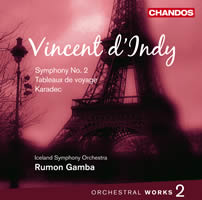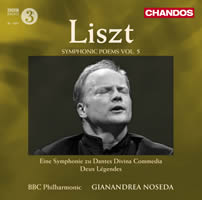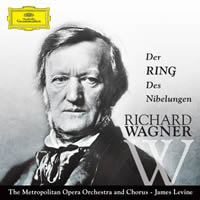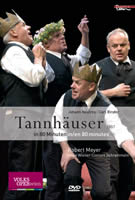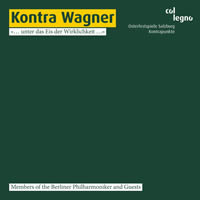Neben Wagner
|
Grant Chu Covell [January 2010.] I reviewed my La Folia contract and am under no obligation to contribute an essay on Wagner. Leveraging Google’s big-brother technology, I discover that I’ve only mentioned the lucky recipient of “Mad King” Ludwig II’s patronage in passing. In this line of work, avoiding Wagner is like a wine snob steering clear of Bordeaux. Wagner commands a different orbit and it’s not something I find alluring. The man’s influence has been pervasive. Many operatic and theatrical conventions, such as the pit orchestra and darkening the house during a performance, are Wagner novelties. And he also attracts a distinct audience: La Folia routinely gets visits from folks combining “Wagner,” “Hitler” and “anti-Semite.” Hmm. I admit to a Wagner blind spot and a consequent indifference to a large wedge of 19th-century music. How can I properly enjoy Debussy’s Pelléas or Bruckner’s Third without the required allegiance? There’s plenty else to fill the gaps; further, Debussy and Bruckner have their own distinctive personalities. Attentive readers may note your reporter’s light coverage of such as Chausson, Delius, Franck and D’Indy. Consider two recent Chandos discs, one with Vincent D’Indy’s Second (Chandos CHAN 10514) and another with Franz Liszt’s Dante Symphony (Chandos CHAN 10524). It is nearly impossible to avoid a throwaway “Wagnerian” in discussing these works.
So what does it actually mean to identify D’Indy’s Symphony No. 2, Op. 57, as Wagnerian? This 1902-03 work is rife with meandering chromatic harmonies the augmented and diminished chords of which arrive at stable resolutions. D’Indy also employs recurring ideas, sometimes clothed as extravagant fanfares. Rumon Gamba and the Iceland Symphony capably dispatch this 44:02 work, which satisfies as it spools but is easily forgotten. Black Forest and Tyrolean strolls inspired several piano pieces collected in 1889 as Tableaux de voyage, Op. 36. These vignettes describe nature and the moods it evokes. D’Indy orchestrated a subset in 1892. Karadec, Op. 34 (1890) offers three excerpts from incidental music to André Alexandre’s play. Gianandrea Noseda, the Ladies’ Voices of the City of Birmingham Symphony Chorus and the BBC Philharmonic tender an impassioned Symphonie zu Dantes Divina Commedia (1849, 1855-56). Compared to the sweeping 42-minute symphony, the 1863 Deux Légendes are fluffy affairs. With themes setting specific Dante lines, Liszt’s symphony is big-P programmatic. His Dante requires mentioning Wagner. Remember that Wagner might not have gotten anywhere without Liszt’s help. It is perverse but plausible to assert that Wagner is actually Lisztian. Liszt did in fact dedicate this symphony to the man who would eventually become his son-in-law. The scandal surrounding Wagner’s affair with Liszt’s daughter, Cosima von Bülow, would not occur until 1865, and Cosima and Wagner were not able to wed until 1870. For whatever reason, D’Indy put me in mind of Zemlinsky, and then I wondered whether the Second’s Wagnerian characterizations could apply to any Mahler opus. I shuddered upon realizing I could describe D’Indy and Mahler interchangeably, an especially sobering thought inasmuch as I vastly prefer one to the other. Admittedly, the Wunderhorn works have Wagnerian moments (the flute heralding resurrection in the Second, resplendent nature in the Third, etc.), but late Mahler is more abstract, dissonant and thematically developed. Fans laud Wagner for his vision but not so much the development of his ideas, though I’m sure everyone admires the stacked leitmotifs at the Ring’s conclusion. Invoking Wagner is perhaps code for grandiose bluster and fantastic programs. In his later years, Liszt became more abstract and adventurous. The austere music for piano especially eschews Wagnerian hints. La Lugubre Gondola (1882/83/85) falls into this period, though, ironically, it commemorates Wagner’s passing. A Nederlands Blazers Ensemble program with orchestrations of Liszt’s Bagatelle sans tonalité, Nuages gris and of course La Lugubre Gondola, etc. is indispensable (NBELive NBECD021). * * *
I admit to imbibing a great deal of Brahms during my formative years, but I don’t think that alone pushed me in the direction of Wagner-neutrality. Approaching Wagner has always seemed a chore, requiring serious investment to come up to speed with respect to the aura and the music itself. Wagner fluency cannot be casually acquired: boxed sets require a significant investment; the operas are long. I confess dozing through a Vienna State Opera production of Die Walküre. I think Christa Ludwig was in the cast. I couldn’t even stay awake for Act III’s Ride of the Valkyries. Years ago, I set forth toward enlightenment with Deryck Cooke’s An Introduction to Wagner’s “Der Ring des Nibelungen” (London 443 581-2). Listening to the discs on car trips, I told my wife that were we ever to get a dog we would name it Fafner. And so, years later, when a canine entered our household … Somewhere in there, I took the plunge into Solti’s 14-disc Ring (Decca 414 100-2). I considered scoring the box on many Tower Records trips, and one day, via a sale and a handful of coupons, I bought the damned thing. And made it through just once but did sample Siegfried every few years. Last year, the Ring became essential household listening when the Metropolitan Opera offered a final round of Otto Schenk’s traditional production. Attending Die Walküre and Siegfried, I improved my record to 2-1. Thanks to persistent parents and grandparents, TWGMFF experienced the entire tetralogy. I wonder if the MET tracks its oldest and youngest attendees — I saw Elliott Carter at Die Walküre. The Ring offers perfect entertainment for a six-year-old keen on knights, swords and dragons. Siegfried’s horn call still sounds at playtime. We were soon enumerating Wotan’s children, and puzzling out who Siegmund’s mother might have been. We preferred DVDs of conventional productions over modern creations. The Stuttgart Opera’s gods (TDK DVUS-RINGBOX) looked like “a bunch of soccer coaches.” Not just because they’re the local band, Levine’s MET cycle on seven DVDs (DG 073 043-9) and 14 CDs (DG 4769803) became the favorite. (Our CD set is actually a Canadian package we snagged above the border.) After a Nibelungen spring, my enlarged appreciation has in no way succumbed to a Wagnerian fever. I suppose I should feel deficient in the face of superlative performances. I know that productions call for a level of skill, endurance and professionalism beyond the capabilities of most opera houses, orchestras and singers. I recognize masterstrokes throughout the cycle, as but two examples, Siegfried’s opening and Götterdämmerung’s train-wreck of a conclusion. That said, I don’t see a Bayreuth pilgrimage anytime soon. * * *
Johann NESTROY and Carl BINDER: Tannhäuser in 80 Minuten (1857). Robert Meyer (voice), Neue Wiener Concert Schrammeln: Peter Uhler, Valmir Ziu (vlns), Günter Haumer (accordion), Peter Havlicek (contra-guitar). Phoenix Edition 804 (1 DVD) (http://www.phoenixedition.com/). Distributed in the US by Naxos (http://www.naxos.com/). “Kontra Wagner.” Richard WAGNER: Träume for violin and small orchestra in A-flat major (1857); Siegfried Idyll (1870); Träume for trumpet, brass ensemble and harp (1857, arr. Arthur Frackenpohl). Vittorio MONTI: Csárdás with themes by Wagner for violin and four bassoons (1904, arr. Arthur Kullnig). Emmanuel CHABRIER: Souvenirs de Munich (1885-86, arr. 1978 by David Matthews). Paul HINDEMITH: Overture to “The Flying Dutchman” as Played at Sight by a Second-Rate Spa Orchestra at the Village Well at 7 o’clock in the Morning (1925). Ernst KRENEK: Serenade for clarinet and string trio, Op. 4 (1919). Anton WEBERN: Movement for string trio (1925). Members, ensembles and guests of the Berliner Philharmoniker. col legno WWE 1CD 60018 (http://www.col-legno.com/). Distributed in the US by Allegro Music (http://www.allegro-music.com/). Opera plots need not be plausible. Despite their basis in myths and legends, certain of Wagner’s are abstruse if not absurd. Tannhäuser concerns one minstrel’s vacillation between physical and spiritual love. After its 1845 premiere, the opera weathered an 1857 parody. (Most everything was parodied then.) Carl Binder abridged Wagner’s music and Johann Nestroy brought the text to its final form. (It’s unclear whether Nestroy wrote the book or simply served as its final editor.) Familiarity with Wagner’s drama is not entirely necessary to enjoy Tannhäuser in 80 Minuten, performed by Volksoper Wien’s director, Robert Meyer, who sprints across the stage taking all the roles, including Venus, here the proprietor of a deli. There are references to “music of the future” (“Zukunftsmusik”) but no religious content. With but a few props, Meyer shares the stage with a four-man Vienna café band, which occasionally doubles as chorus. Filmed in front of an appreciative audience, Meyer proves expert at gauging timing and delivers each of the nine characters in a different dialect. German-language competency would certainly augment the error-prone subtitles. “Kontra Wagner” supplies the right dose: a luscious Siegfried Idyll and the composer’s own arrangement of a song from the Wesendonck Lieder for violin and ensemble. Various Berliner Philharmoniker regulars and guests provide polished performances of these and other arrangements, parodies, and Wagner-influenced works. Among the more bizarre items are Hindemith’s mangled overture and Monti’s miniature Csárdás for violin and four bassoons. The original Monti is a bubbly Hungarian trifle. Arthur Kullnig’s Ring leitmotifs, customarily intoned on thunderous brass, are a hoot. For Hindemith’s zinger, the string quartet plays wrong notes and similar fumblings. Chabrier’s Quadrille on Themes from Wagner’s “Tristan und Isolde” injects burlesque into King Mark’s step. The harmonies never stray in David Matthews’ orchestration which includes percussion and four-square rhythms. Parodying Wagner seems easy. In a post-Romantic age, it’s permissible to transform Nibelungen, heroes and lovers into snorting bassoons, Hungarian gypsies, inept resort musicians, and kitschy Viennese dancers. Krenek and Webern put the Gesamtkunstwerkmeister squarely in the rear-view mirror. Looking to Richard Strauss and beyond, the program’s longest entry, Krenek’s six-movement Serenade, filters Wagner through industrial-strength chromaticisms. Webern’s wispy string-trio movement concludes the program.
[More (Dis)Arrangements, Grant Chu Covell]
[Previous Article:
Ze Tschörmans Are Coming!]
[Next Article:
Album Tweets 6.]
|
